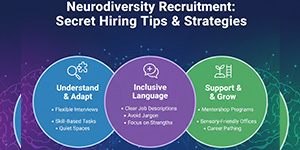Top 15 HR KPIs Every Company Should Track in 2025
In the based-on data business environment of today, human resources (HR) encompass more than just hiring and managing staff. These days, businesses use Human Key Performance Indicators, or KPIs to match HR plans with overarching business goals.
As we step into 2025, tracking the right HR KPIs has become essential for improving organizational performance, enhancing employee engagement and ensuring HR accountability.
But what are the KPIs for HR department that matter most? How do you choose the right HR KPIs and metrics to ensure efficiency and strategic growth? The top ten HR key performance indicators are highlighted in this extensive guide, along with five more crucial measures that every HR staff should keep an eye on in 2025.
What Are HR KPIs and Why Do They Matter?
HR performance metrics are measurable indicators that are used to assess how well HR operations are doing. These metrics offer information on how successfully the HR division is accomplishing its goals in areas like recruitment, employee retention training performance management and more also.
Examples of why HR KPIs matter:
- They contribute to the identification of inefficiencies in HR processes.
- Provide data that will enhance decision-making.
- Align HR initiatives with business objectives.
- Increase responsibility within human resources professionals.
Use Case Example: An IT business dealing with high turnover rates used HR KPIs such as employee retention rate and cost-per-hire to uncover issues with onboarding and job matching also.
This resulted in focused changes that reduced turnover by 30% in one year.
Top 15 HR KPIs Every Business Should Monitor
In 2025, the following are the most crucial HR KPIs that every company should keep an eye on:
1. It's Time to Hire
Decides the typical time required to fill an open position.
Why these matters: Assists HR teams in determining the efficiency of recruitment operations.
Example: A banking company set a 30-day hiring time KPI. They sped up business growth by cutting this measure to 20 days with automation techniques.
2. Rate per Hire
Calculates the total cost of hiring a single new employee, accounting for advertising, recruitment and onboarding expenses.
Pro Tip: Benchmark your sector to find a healthy average price.
3. Employee Turnover Rate
The percentage of workers who quit the company during a given time frame is shown here.
Use Case: High turnover signals issues with company culture or hiring accuracy also. Tracking this HR KPI enables timely interventions.
4. Employee Retention Rate
In addition to turnover this statistic focuses on the number of employees who stay over a given time period.
Advice: High retention is a sign of excellent engagement and job happiness also.
5. Rate of Absenteeism
Calculates the frequency of unscheduled employee absences.
Why it's a key performance indicator: Unexpected absences might increase other employees' duties and interfere with production.
6. Training Effectiveness
Assesses how well training programs improve employee performance.
How to measure: Use post-training surveys, performance reviews, and productivity metrics.
7. Employee Engagement Score
Quantifies how emotionally invested employees are in their work and the company also.
KPI Tools: Annual engagement surveys feedback platforms and pulse checks.
8. Internal Promotion Rate
Shows the percentage of leadership positions filled through internal promotions.
HR KPIs example: A company aims for 70% internal hires to boost morale and also reduce hiring costs.
9. Offer Acceptance Rate
Decides the proportion of applicants who accept a job offer relative to the total number of offers.
Significance: A low percentage could indicate problems with corporate branding, job descriptions or pay.
10. Metrics for Inclusion and Diversity
Monitors the representation of various ethnic groups genders and other demographics.
Use Case: Using this HR KPI a global corporation created focused programs that increased worker diversity by 15% in a single year.
11. Salary Competitiveness Ratio
Compares your salary levels to industry standards to ensure you're competitive in the market.
HR analytics KPIs like this help attract and retain top talent.
12. Performance Management Score
Measures how employees are meeting or exceeding their goals and expectations.
KPIs for HR managers often include this metric to assess departmental and team productivity.
13. HR-to-Employee Ratio
The figure represents the amount of HR specialists per employee. Scaling and budgeting are both beneficial. In many businesses the ideal ratio is one HR person for every 100 employees.
14. Compliance Training Completion Rate
Measures the percentage of employees who complete required legal and safety training.
Example: Companies in healthcare or finance must track this HR KPI to avoid costly penalties.
15. Workforce Productivity Rates
Tracks output per employee, typically by comparing revenue to headcount.
KPIs for HR directors: This micrometric is frequently tracked by leaders for strategic planning purposes.
How to Implement HR KPIs Effectively
Take the following actions that will maximize the usefulness of your HR KPIs:
Step 1: Match KPIs to Business Goals: Make sure your KPIs align with departmental objectives and the company's mission.
Step 2: Use Smart HR Analytics Tools: Leverage tools like SAP SuccessFactors, BambooHR, or Workday for data collection and analysis.
Step 3: Set Benchmarks and Targets: Compare metrics against industry standards and set realistic performance goals.
Step 4: Regular Monitoring and Reporting: Employ dashboards and monthly reports to evaluate outcomes and modify tactics also.
Step 5: Communicate Results: To guarantee openness share information with leadership teams and also pertinent departments.
Frequently Asked Questions
What are KPIs of HR business partner?
These include strategic and consultative metrics such talent development, workforce planning, succession planning, and alignment with corporate objectives.
Organizational health metrics like bench strength, internal mobility, and leadership pipeline development are also monitored by HR business partners.
These HR KPIs are created to link people strategies with operational and financial results in order to create value throughout the company.
What are KPIs of HR business partner? typically emphasize proactive measures such as improving organizational agility and supporting cultural transformation also. Metrics like employee net promoter score (eNPS) and capability growth rate are also valuable in these roles.
HR KPIs example: An HR business partner at a fast-scaling startup used KPIs like time-to-productivity and internal promotion rate to guide talent strategy, resulting in a 30% improvement in team efficiency.
A different instance is a regional HRBP at a manufacturing company that monitored high-potential personnel turnover and the depth of the leadership pipeline to find areas where development programs were lacking also.
What are the KPIs for HR department in 2025?
In addition to traditional indicators such as turnover, cost-per-hire, and time to hire, modern HR departments are adopting forward-looking HR KPIs.
These include digital adoption rate, employee experience score, diversity index and remote work productivity. Nowadays, a lot of businesses integrate learning agility and AI preparedness into their HR analytics KPIs dashboards to ensure that their personnel strategy is future-ready.
HR KPIs example: A multinational enterprise integrated inclusion survey scores and digital training completion rates as core KPIs, helping improve both engagement and innovation across regions.
Other HR KPIs and metrics may include workforce wellbeing indicators and succession coverage ratios.
Explore More: How to Measure KPIs: Key Performance Indicators Explained
Conclusion
Tracking the right HR KPIs in 2025 is not just a best practice in a changing workplace, it's essential to remain adaptable and competitive. From hiring to staff engagement, every KPI provides a window into the state of your company.
By focusing on these top 10 HR KPIs, plus additional strategic metrics, HR leaders can drive smarter decisions, improve performance and align more closely with overall business success.
As an HR manager, director, or business associate, comprehending and putting into practice the right HR KPIs and metrics this will set the company you run on a successful course for 2025 and beyond.





